The Criminal Gangs of 19th Century Britain
6-7 minute read
By Alex Cox | July 8, 2015
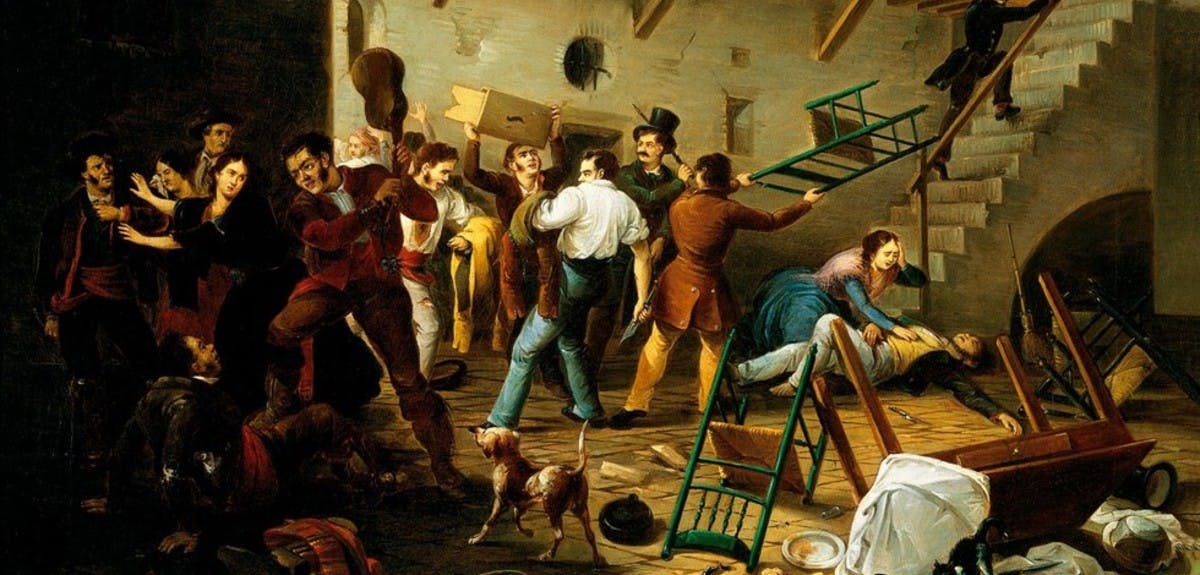
The 19th century was a period of incredible change in Britain. The technological advancements made during the industrial revolution led to massive urbanization and completely transformed the structure of British society. Millions of working class people, who for centuries had lived in rural communities centered around agricultural labour, were forced to relocate to the booming cities of the industrial north and the arrival of the steam engine meant that increasing numbers of immigrants were also flocking to these cities. Slum areas expanded rapidly, becoming tense, over crowded melting pots where different social, religious, ethnic and political groups were forced to fight for their place in the new world.
Meanwhile, individuals of a more predatory nature were quickly realizing that crime was much easier, more profitable and had higher chances of success with the help of like-minded people. Powerful street gangs began to emerge in cities across the country and violent turf wars erupted as they sough to carve out their territories.
Evidence of these gangs and the various criminal activities of their members can be found within our collection of historic British newspapers and England & Wales, Crime, Prisons & Punishment records.
London - The Forty Elephants
The Forty Elephants, also known as the Forty Thieves, were a 19th-century all-female crime syndicate who were based in the Elephant and Castle area of the city. They specialized in shoplifting and smash and grab raids and were first mentioned in newspapers in 1873 although they are believed to have existed since the late 1700s. They worked alongside the notorious Elephant and Castle gang, a sprawling, powerful army of hardened male criminals who effectively ran the south London underworld. The Elephants were tightly run and neatly organised, operating a collection of cells whose activities extended across London and into other cities. They mounted carefully executed raids on London's West End shops, wearing specially tailored coats, cummerbunds, muffs, skirts, bloomers and hats sewn with hidden pockets, which they would use to plunder thousands of pounds worth of goods in a matter of minutes. In the 20th century, they began using high-powered cars to outrun the police and would use the rail network to launch raids in other towns.
Their most well known leader was the notorious Diamond Annie. Annie was born in Southwark in 1896 and was the gangs undisputed queen by the time she was 20. Annie proved to be a highly effective leader, dividing the gang into cells to simultaneously ransack multiple shops across the city. To the police, she was "the cleverest of thieves". Her nickname came from the powerful punches she delivered with her diamond ring studded fists. The gang was also capable of shocking violence and guarded their territory jealously. Any thieves found to be operating on their turf were forced to pay a percentage of their takings and those who refused were often kidnapped and badly beaten.

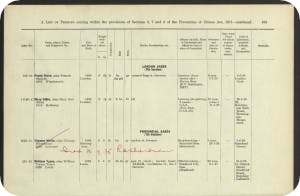
Manchester – The Scuttlers
The Scuttlers were not a single organised group but rather a collection of neighbourhood-based youth gangs formed in working class areas of Manchester, Salford, and the surrounding townships during the late 19th century. They rose to fame following the shockingly violent Scuttller turf wars that erupted in Manchester in the early 1870s and continued for the next thirty years. Scuttlers could be identified by their distinctive dress as most wore a kind of uniform consisting of brass-tipped pointed clogs, bell-bottomed trousers, colorful silk scarves, flat caps and shot hair with long fringes.
Members regularly fought in pitched battles involving a variety of weapons. Nearly all Scuttlers carried knives and wore heavy buckled belts, often decorated with pictures such as snakes, scorpions, and hearts pierced with arrows. Their thick leather belts were their most frequently used weapons and buckles were often sharpened to create a flail capable of inflicting horrific injuries. Clashes between rival Scuttler groups could involved large numbers of youths. Local newspapers described one such instance in May 1879 as involving more than 500 people. Scuttler membership reached a peak in the early 1890's and it was said that at that time, more youths were held in Strangeways Prison for scuttling than for any other offence.
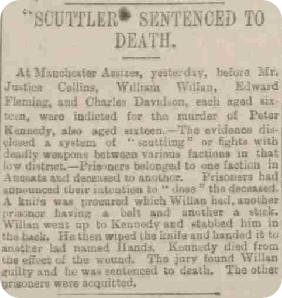

Liverpool – The High Rip Gang
As a major port city, Liverpool was home to a number of criminal gangs during the 18th century. The most feared of these groups was the High Rip Gang. The High Rippers became infamous following the shocking 1884 Blackstone Street Murder, in which a Spanish Sailor was brutally beaten and stabbed to death in a mugging gone wrong. The gang became renowned their extreme violence, vicious street robberies and carefully planned revenge attacks. They were locked in bitter turf war with their arch rivals, the Logwood Gang, but were perhaps the most feared group within this list thanks to their tendency to engage in totally indiscriminate acts of random violence. They mainly operated in the dock area of the city and were known to target lone docker workers on their way home from work. They became so bold in their activities that many within the city feared they were untouchable and those unfortunate to live within their territory (the area around Portland Street) lived in constant fear of their attacks. After a series of sickening killings, a number of members were executed.
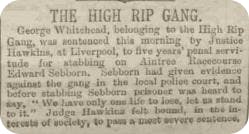

Birmingham – The Peaky Blinders
Recently the subject of a popular BBC drama, the Peaky Blinders were perhaps the most prominent criminal group in late 19th century Birmingham. The gang ruled the industrialised areas of Bordesley and Small Heath from the 1880s through to the early 1900's, when the city was one of the world's most important manufacturing hubs and allegedly earned their name through the practice of sewing razor blades into the peaks of their flat caps. They were originally little more than a loosely organised groups of thugs and petty thieves living within the worst slum areas of the city but, over time, the Blinders evolved into a sophisticated organisation that ran an extensive criminal empire based around illegal betting, protection rackets and the cities black market. Members could be identifies by their sartorial style, wearing uniforms consisting of donkey jackets, silk scarfs, bell-bottom trousers, steel-capped boots and their distinctive weaponized flat caps.
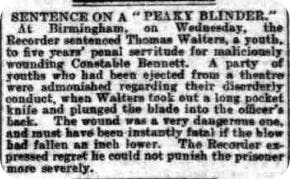

West Country – The Cock Road Gang
Not all criminal gangs of the 19th century operated out of London or the industrial cities of the North, many rural communities were also plagued by bands of criminals who had grouped together in hope of greater profits. The Cock Road Gang of Gloucestershire were a criminal family who specialized in highway robbery, burglary and horse theft. They primarily operated around the parish of Kingswood but were also known to target travelers on lonely stretches of the roads that lead in and out of Bristol, Bath and Gloucester. Taking their name from the small hamlet in which many of the members lived, the gang was made up of half a dozen or so inter-married families – the Caines, Baker's, Brain's, Bryant's and Fry's. They were so well established and feared within the area that they would rob travellers in broad daylight and ran a structured protection racket, where farmers paid due the size of their estate. After a series of murders and the slaying of a police officer, the Bristol authorities called together watchmen, city guards and local constables and sent them out in force to arrest the entire gang in a night time raid. Generations of the same families were hung, transported, and imprisoned.
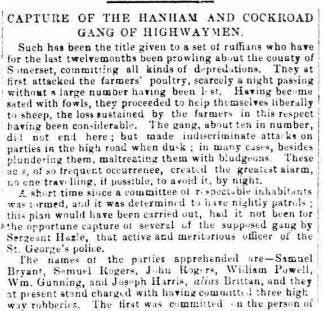

Have you discovered any roguish relations yet? Explore our our crime, prison and punishment records to discover if your family was involved in the criminal underworld.
Related articles recommended for you

'Their hunger will not allow them to continue': the victorious London dockers' strike of 1889
History Hub

The Women's Prize Trust announces Findmypast as the inaugural sponsor of the Women's Prize for Non-Fiction
The Findmypast Community

More footballers in the family? Jack Grealish’s family tree
Discoveries

